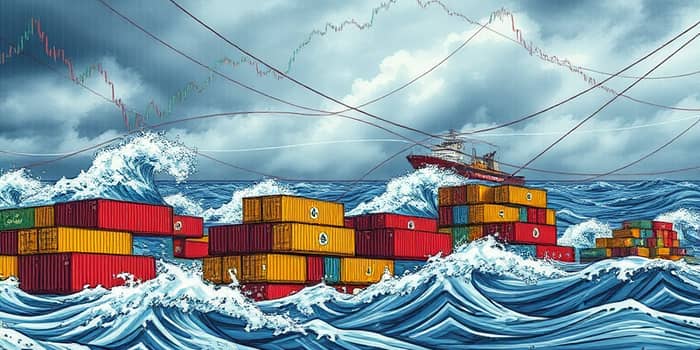
In recent months, commodity markets have oscillated sharply, spotlighting deep-seated issues in global logistics and procurement structures. After a modest 2% rise in Q1 2025, prices plunged nearly 6% in April, with few exceptions. Such swings are more than financial footnotes—they expose vulnerabilities that ripple across industries and communities.
Understanding these trends is essential for business leaders, policymakers, and supply chain professionals striving to build resilience and navigate future shocks.
Commodity price fluctuations are rooted in a blend of supply-side disruptions and shifting market dynamics. Post-pandemic recovery remains uneven, and lingering bottlenecks—from port congestion to equipment shortages—continue to restrict flow.
Geopolitical tensions, including the war in Ukraine and Middle East conflicts, have added layers of uncertainty. Tariffs and trade policy reversals further complicate the picture, creating a volatile commodity price environment that challenges even the most experienced operators.
On the supply side, climate events and labor shortages intensify production risks. Coastal storms disrupt grain exports, while droughts in major growing regions reduce yields. In logistics, aging infrastructure and skill gaps hamper timely deliveries, undermining real-time inventory visibility and leaving companies exposed.
Meanwhile, global economic growth has slowed. Energy demand has softened, with oil prices falling almost 10% between August 2024 and March 2025 amid non-OPEC+ supply gains and trade war fears. Yet precious metals like gold have surged as investors seek safe havens.
Price volatility carries steep costs. Swiss Re estimates supply chain disruptions cost organizations around $184 billion annually. A recent Maersk survey found that 76% of European shippers faced at least one disruption last year, and 22% endured over twenty incidents.
Consequences range from inflated input costs to reputational damage. Delivery delays can erode customer trust, while compliance lapses heighten regulatory and financial exposures. Firms that lack agility often struggle to recover lost revenue and market share.
These market swings shine a light on structural weaknesses. Companies reliant on a single supplier or region face amplified risks when disruptions occur. Fragmented data systems impede rapid scenario planning, leaving decision-makers blind to emerging threats.
Integrating AI and advanced analytics emerges as a lifeline. By harnessing machine learning for demand forecasting and risk modeling, organizations can detect potential bottlenecks and adapt more swiftly to turning tides.
Different commodity groups reflect distinct patterns of risk and recovery. Below is a snapshot of forecast price changes through 2026:
The energy sector wrestles with policy shifts and sanctions, while metals are cooling after a 2.5% uptick in 2024. Agricultural staples like wheat remain vulnerable to climate-driven yield swings.
Governments are stepping up transparency and sustainability mandates. The European Union’s ESG regulations now require detailed reporting on labor practices and environmental impact. Such frameworks aim to curb unethical sourcing and foster greater supply chain transparency.
Central banks and sovereign wealth funds can moderate boom-bust cycles through strategic reserves and fiscal buffers. Coordinated public-private collaboration will be crucial to cushion economies against sharp price reversals.
Businesses can fortify operations with proactive measures. Diversifying suppliers and considering nearshoring mitigates exposure to geopolitical shocks. Embracing digital and AI-driven infrastructure enhances visibility and agility, enabling real-time adjustments to production and distribution plans.
ESG remains at the forefront, as stakeholders demand ethical and sustainable practices. Consumer pressure and investor scrutiny are driving companies to adopt circular economy principles, reduce waste, and ensure traceable sourcing.
Meanwhile, AI-powered tools are transforming risk management. From automated demand sensing to predictive maintenance in logistics, these solutions empower teams to anticipate disruptions and maintain operational efficiency during crises.
Commodity price swings are more than transient market events—they are a barometer for the health of global supply chains. By understanding root causes and embracing strategic innovations, organizations can weather volatility and emerge stronger.
Leaders who prioritize diverse sourcing, digital transformation, and collaborative risk management will set the standard for resilience. In a world of unpredictable shifts, those prepared to adapt will seize new opportunities and safeguard their competitive edge.
References













